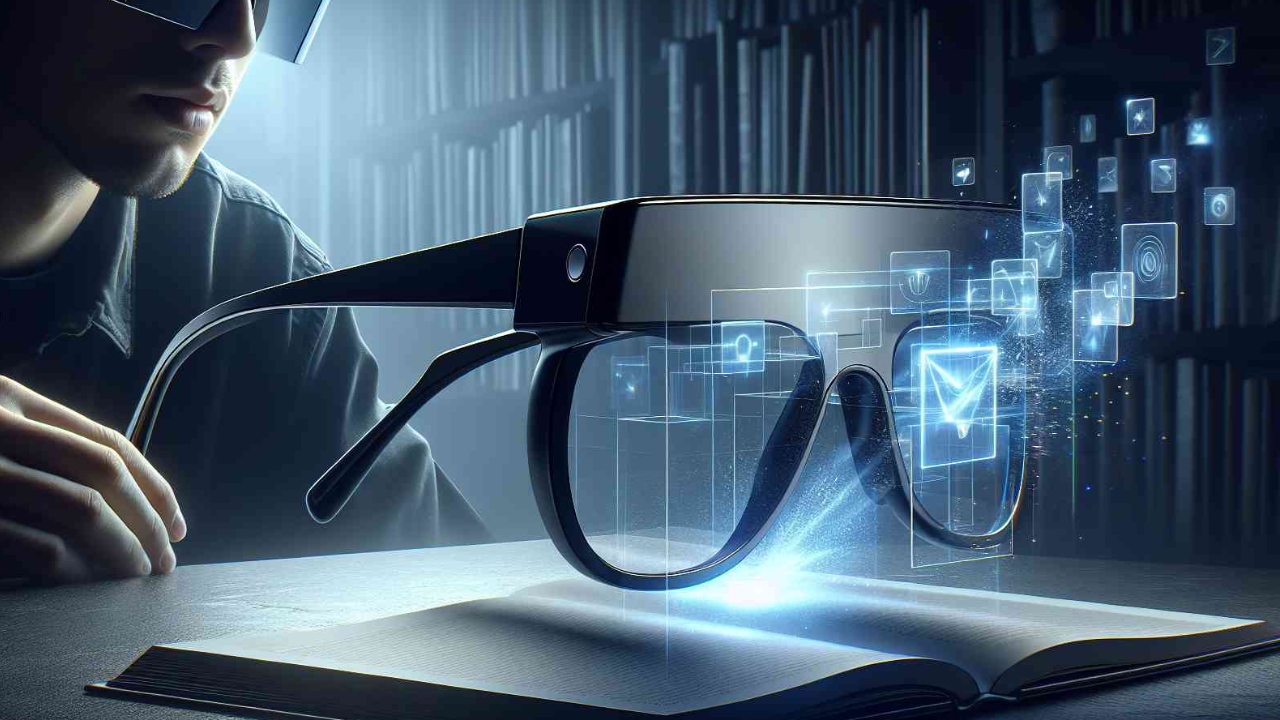Smart glasses function by incorporating cutting-edge technologies with conventional eyeglasses, turning them into multipurpose tools that provide a smooth transition between virtual and real-world experiences. Fundamentally, smart glasses are made up of several key parts that work together to enable their various features.
Smart glasses can detect head motions and gestures thanks to the incorporation of sensors like gyroscopes and accelerometers. This feature makes user interaction easier and makes motion tracking possible. A key component of connectivity, wearable display glasses frequently connect to smartphones, tablets, and other devices using Bluetooth technology. Data transfer, notifications, and even hands-free communication are made possible via this connectivity.
Devices Compatible with Smart Glasses
As a revolutionary wearable technology, smart glasses improve our daily lives by combining usefulness and style. Their versatility as companions in our increasingly connected world is largely due to their capacity to link with numerous devices, which is one of the main factors leading to their attractiveness.
Technology via Bluetooth
The All-In-One Connectivity Enabler: Bluetooth is a widely used technology that smart glasses use to connect to numerous devices. Bluetooth offers a common language that allows smart glasses and other compatible devices to communicate, be it smartphones, tablets, computers, or even smart home appliances.
Pairing and Compatibility: Users can usually pair their smart glasses and target devices by simply scrolling through the settings on both devices. By guaranteeing that smart glasses are compatible with devices from various manufacturers and platforms, Bluetooth compatibility promotes a more diverse user experience.
Communication Using Smartphones
Mirroring smartphone alerts: Mirroring smartphone notifications is one of the main uses for smart eyewear. This lets consumers keep informed without continually looking at their phones it includes incoming calls, messages, and app alerts. This hands-free simplicity is especially helpful in circumstances where taking out a phone could be dangerous or inconvenient.
Location and Navigation Services: Turn-by-turn directions are displayed right in the field of vision of the user when smart glasses are integrated with smartphone navigation apps. This improves the effectiveness of navigation, particularly for bikers and pedestrians who can make use of real-time advice without consulting a portable device.
Cross-Platform Harmoniousness
Operating System Agnosticism: A lot of smart glasses are made to be compatible with a wide range of operating systems, making it possible for them to connect to various devices without any problems. Because of their versatility, consumers can take advantage of smart glasses regardless of whether they use iOS or Android smartphones.
App Ecosystem Integration: Complementary apps for smartphones and tablets are frequently available for smart glasses. With the help of these apps, users may make use of extra capabilities, upgrade firmware, and adjust settings to personalize their smart glasses experience.
Combining Wearable Ecosystem Integration
Smartwatches and fitness trackers: Smart glasses are compatible with other wearables, including smartwatches and fitness trackers. An integrated approach to tracking fitness and health is made possible by this networked environment, in which information from many devices works together to give consumers a thorough understanding of their well-being.
Synchronized Data: Smart glasses can help consumers enjoy synchronized data when they wear numerous smart gadgets at once. This results in a seamless and integrated user experience across devices as fitness data, notifications, and other pertinent information move between them.
Business Utilization
Collaboration and Productivity: Smart glasses can improve collaboration and productivity in work environments. Users can see papers, make video chats, and instantly share information with colleagues by connecting them to laptops and tablets. This is especially useful for fields like field services, logistics, and healthcare.
Workflows with Augmented Reality (AR): Certain smart glasses are made for particular business uses, incorporating AR capabilities to improve processes. For example, technicians can accomplish difficult procedures more efficiently and with fewer errors by using AR overlays to receive step-by-step instructions.
Integration of IoT and Smart Homes
Home automation: A variety of smart home appliances can be controlled remotely via smart glasses. Users can create a seamless and networked smart home experience by connecting IoT (Internet of Things) devices, which allow users to manage lighting, thermostats, and security systems with basic voice requests or gestures.
Voice Assistants: Adding integration for well-known voice assistants like Google Assistant or Amazon Alexa allows smart glasses to do even more. Natural language commands can be used by users to make reminders, ask inquiries, and manage smart home devices, thus improving the hands-free and voice-driven interface.
Conclusion
Smart glasses are becoming more than just stylish ornaments; they are multipurpose instruments that work with a wide range of gadgets. The fact that smart glasses can communicate with a variety of devices, including wearables, smartphones, smart home appliances, and enterprise systems, is evidence of their versatility and potential influence on a range of areas of our lives.
